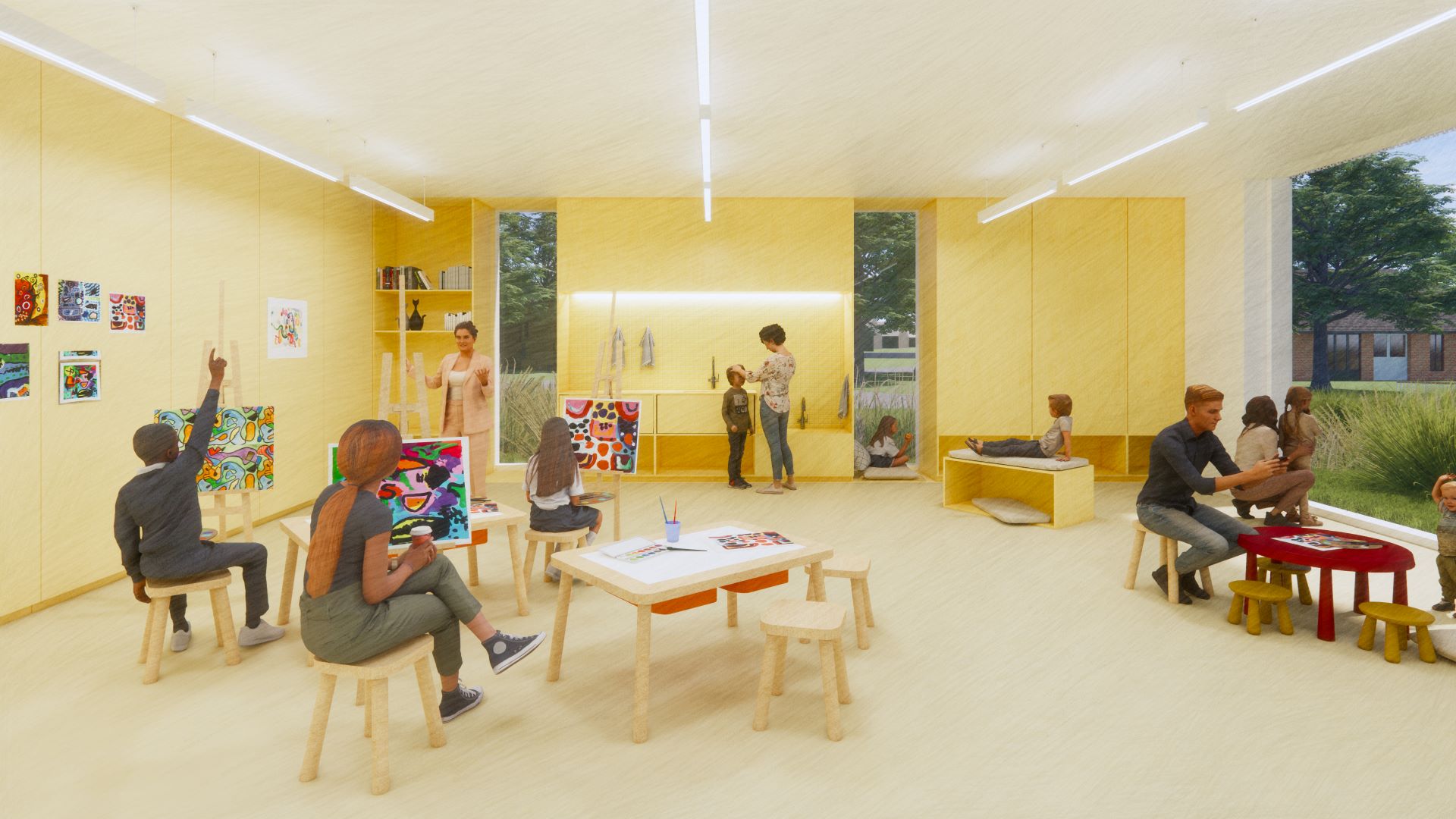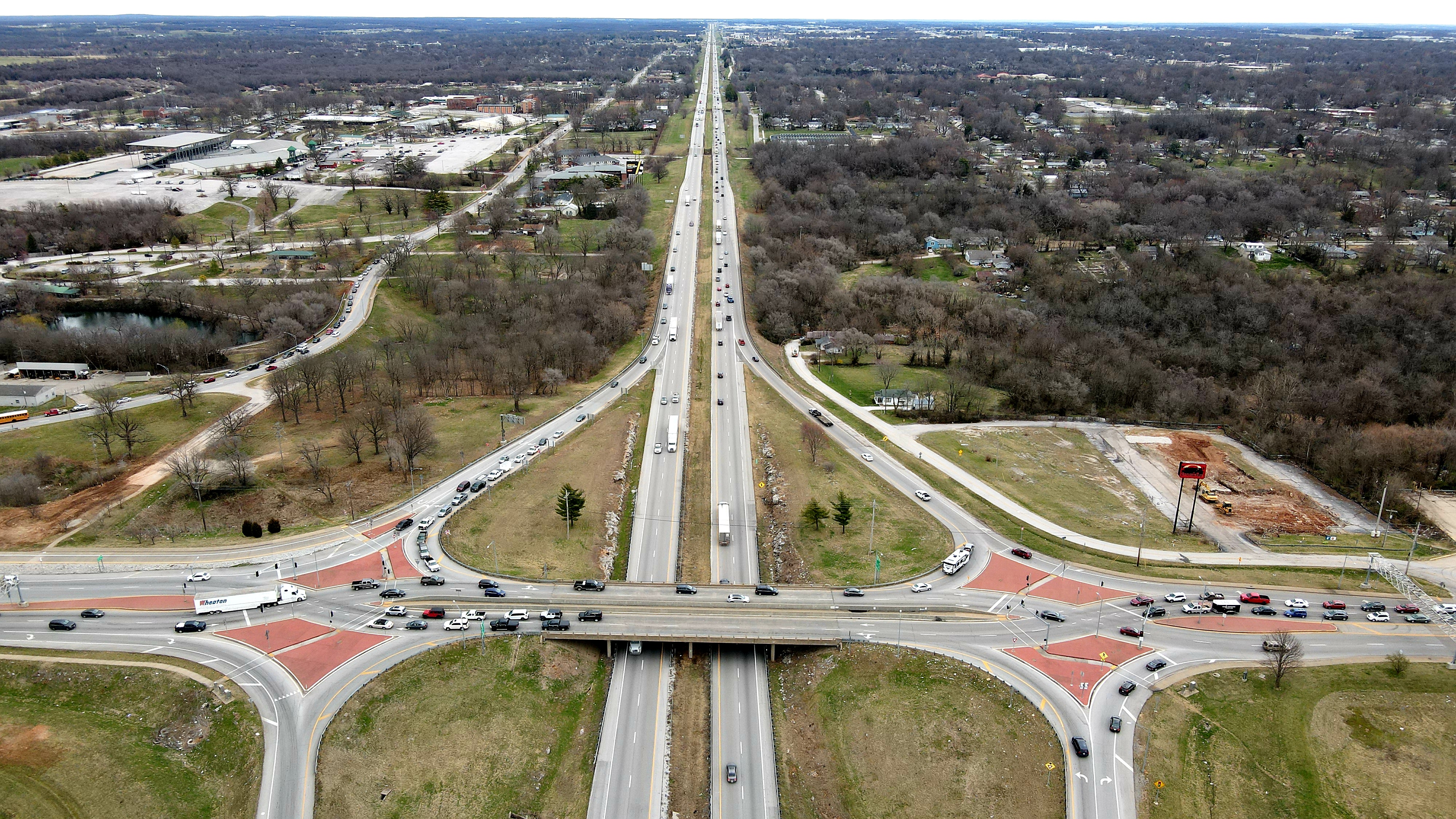by Rudi Keller, Missouri Independent, and Daily Citizen Staff
State funding for major projects in the Springfield area, including expanding Interstate 44 to six lanes around the city's north side, survived a slew of more than 170 items vetoed by Gov. Mike Parson June 28 as he approved a $50.5 billion budget for the fiscal year that starts Monday, July 1.
Among the Springfield area projects that were funded include:
- $10 million for the Springfield Art Museum, which will help fund a major renovation and expansion project to start this fall. The total project is estimated at $49.75 million, and the city is initially providing $14.5 million in bond funding, with the rest to come from fundraising. About $16 million has already been raised.
- $15 million for the new Alliance for Healthcare Education (see related story).
- $5 million for the Springfield Little Theatre, to help fund renovations at the Landers Theatre and the Judith Enyeart Reynolds School of the Performing Arts, enhance accessibility and grow the programs offered by the nonprofit.
- $3.5 million (including some carryover from 2023) for improvements at Hammons Field, including a walking path around the stadium.
- $3.4 million to help fund improvements to the LeCompte Road and Division Street intersection, and widen the road to handle traffic demands of the Springfield Underground and surrounding industrial development.
- $2 million to help fund the construction of a firing range in Fair Grove. The training facility is being built by Sheriff Arnott’s Distinguished Posse, a nonprofit led by Greene County Sheriff Jim Arnott, but will be used by Greene County deputies and other law enforcement agencies.
- $1 million to the Springfield-Greene County Health Department for Family Connects, a new program that provides newborns and mothers at-home visits from registered nurses.
Among local items vetoed by the governor were:
- $5 million for the renovation and expansion of soccer facilities at the Cooper Park and Sports Complex.
- $2 million for facilities for the new Jordan Valley Community Health Center's PACE program — the Program of All-Inclusive Care for the Elderly offers help with medical and personal care so that people can age at home safely.

State Sen. Lincoln Hough, R-Springfield, chair of the Senate Appropriations Committee, praised the governor's budget action. “Today marks the culmination of nearly a year of efforts to make sure the citizens of Missouri will have a properly funded government in the year to come and a plan to make our state better for future generations,” Hough said in a statement.
Parson cut $1 billion from the spending plan passed this year by lawmakers in a budget largely put together behind closed doors by Hough and House Budget Committee Chair Cody Smith, R-Carthage.
In a statement explaining his cuts, Parson said he vetoed earmarked items that he believes were loaded into the budget for special projects and organizations without considering the future financial stability of the state.
“The use of the veto pen is not something I do eagerly, but today these vetoes represent the elimination of unnecessary pet projects and the protection of the taxpayer dime,” Parson said in a news release announcing his budget actions. “We may be leaving $1.9 billion on the bottom line, but that doesn’t mean we spend for the sake of spending.”
It was the second year in a row Parson cut the budget despite near-record surpluses.
Reduced funding but still $577.5 million for I-44
One of the biggest cuts was $150 million in general revenue that was part of a $727.5 million plan for expanding Interstate 44 in southwest Missouri. The cut leaves $577.5 million available, with $363 million coming from borrowed money.

Other projects, large and small, that Parson did not approve include grants to not-for-profit organizations, support for local projects and set-asides that targeted a single vendor for a state purchase.
Many of the individual items carried a warning — that the fund being tapped was “grossly overappropriated,” that it was a local responsibility or that the long-term financial health of the state required the cut.
A new education law will cost an estimated $400 million more annually for public schools when fully implemented, with the foundation formula estimated to cost $300 million more in fiscal 2026, Parson wrote in a message repeated several times.
“We have obligations both this year and in future years that must be accounted for today to avoid future budgetary pains tomorrow,” Parson said in the news release.
The budget — $50.5 billion for state operations in the year that begins Monday — has several spending initiatives that Parson did approve. He requested several of them and accepted others added by lawmakers.
- Almost $700 million for roads including the $577.5 million for I-44, $150 million to widen U.S. 67 through Butler County and $40 million for construction on U.S. 65 from Buffalo to Warsaw.
- Full funding of the state’s 75% share of school transportation costs for the third year in a row. The transportation support has not been fully funded for almost 30 years until the budget surplus started growing.
- A 3% increase in funding for state colleges and universities, plus $367 million in new funding to complete construction projects begun in 2022 or for new campus construction.
- A 3.2% pay raise for state employees.
- A boost in state grants to support teacher pay to make the minimum salary $40,000. In May, Parson signed a bill mandating the $40,000 minimum salary for all districts.
- $1.5 billion in federal grant awards to expand broadband access in rural areas.
- $56 million for public and charter schools to provide Pre-Kindergarten programs to all students qualifying for free and reduced lunch.
Parson left in place initiatives he called for, such as increased rates for child care providers, even if the budget did not fund them at the levels he requested.
State retains large surplus
None of the items cut were vetoed because the state lacks money.
On May 31, the general revenue fund held $4.8 billion and there was $1.6 billion in the bank in other funds that could be spent like general revenue. There are also funds set aside for major projects that are not so far along that they couldn’t be stopped, like $600 million set aside for expanding the state Capitol Building.
Parson’s administration put out a two-page summary seeking to dispel the idea that the state has substantial surplus cash. There are large fund balances, the document states, but there are also large pending obligations that will draw down those balances.
”Reductions in revenue and increased ongoing expenditures approved by recent legislation mean we have obligations beyond the current fiscal year that rely on Missouri’s fund balance in the future,” the summary states.
Parson’s budget office projects a $1.9 billion general revenue balance on June 30, 2025. The budget passed by lawmakers spent $50.9 billion total on state operations, with $15.2 million from general revenue.
Parson said in the news release that he cut that to $50.5 billion total for operations and $14.9 billion in general revenue. The budget is based on a projection for $13.1 billion in general revenue receipts.
That means an accumulated surplus must be tapped to fill the gaps on ongoing operations, but there are trends that will reduce the drawdown.
Last June 30, Missouri had a general revenue surplus of $5.1 billion, $1.3 billion more than had been projected when the budget for that fiscal year was written.
Parson’s budget proposal from January projected it would decline to $3.2 billion when the current year ends Sunday and stand at $1.6 billion on June 30, 2025.
Those estimates were based on a slight decline in revenues this year, but through Thursday collections are up 1.1%, which will add a small amount to the surplus. The state has collected $94 million more in general revenue in the current year, $13.3 billion total so far, than in fiscal 2023.
The estimate for almost flat revenue in the coming year is unchanged, Budget Director Dan Haug said Friday in an email to The Independent.
That would mean approximately $200 million would be available during the coming fiscal year that is not anticipated in the original budget.
The other factor reducing the draw on general revenue and other state funds is understaffing at state agencies, in some cases more than 10% down from authorized strength.
Working to reduce state revenue are pending tax cuts. If this fiscal year ends with revenue exceeding last year’s total by $200 million, it would trigger a reduction in the top income tax rate of 0.1%, to 4.7%, on Jan. 1.
The increase through Thursday isn’t enough to trigger the refund but there are collections to come.
“We won’t,” Haug said, “be able to make that calculation until after we see what final collections will be.”


